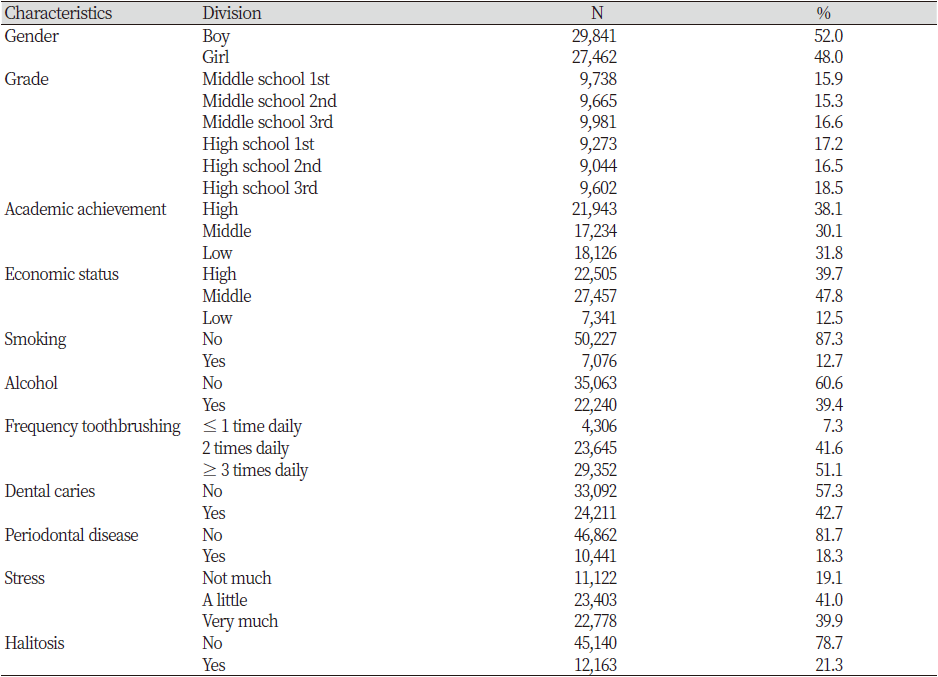Abstract
The purpose of this study was to examine the relationship between stress and halitosis in a representative sample of Korean adolescents. This study was based on the 15th Korea Youth Risk Behavior Survey (2019). The final participation rate in the survey was 95.3%; 57,303 out of 60,100 (95.3%) adolescents aged 13–18 years were selected. Multiple logistic regression with complex samples was performed to identify the correlation between stress and halitosis. Stress level was classified as ‘very much’, ‘a little’, and ‘not much’ and halitosis was defined as the presence of an unpleasant odor in the oral cavity. The prevalence of halitosis among students was 21.3%. As a result of multiple regression analysis, the ‘a little’ [odds ratio (OR); 1.39, 95% confidence interval (CI); 1.29-1.49] and ‘very much’ stress group (OR; 1.78, 95% CI; 1.66-1.90) exhibited significantly higher risk of halitosis than the ‘not much’ stress group. A significant correlation between stress and halitosis exists among Korean adolescents. Therefore, psychological factors such as stress should be considered in managing halitosis in adolescents.
Figures & Tables

Table 1. Characteristic of study population (N=57,303)


